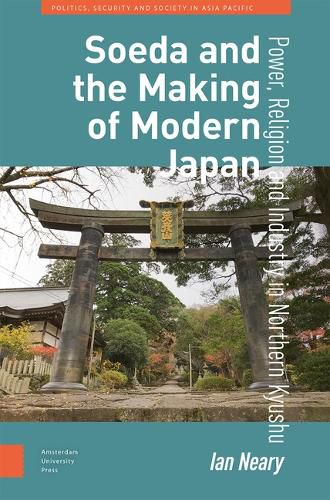Readings Newsletter
Become a Readings Member to make your shopping experience even easier.
Sign in or sign up for free!
You’re not far away from qualifying for FREE standard shipping within Australia
You’ve qualified for FREE standard shipping within Australia
The cart is loading…






Soeda's story provides insights into the last thousand years of Japanese history. It was the location of a strategically important castle, Ganjakuj., from the twelfth century until its destruction by Toyotomi Hideyoshi in 1587. Ganjakuj. controlled access to Mt Hiko which was the most important Shugend. monastic community in Kyushu until its dissolution in the 1870s. Coal mines in Soeda in the first half of the twentieth century owned by the Kurauchi family drove the modernization of the town and contributed to the industrialization of the country. During the Pacific war, these mines employed Korean labourers and Allied POWs. The town continued to contribute to national economic growth in the 1950s but, following the switch to oil as the main source of energy, its coal mines closed in the 1960s. For forty years between 1971-2010, Mayor Yamamoto Fumio sheltered the town from the worst impact of being 'left behind', yet the town continues to seek a new identity in the twenty-first century.
$9.00 standard shipping within Australia
FREE standard shipping within Australia for orders over $100.00
Express & International shipping calculated at checkout
Soeda's story provides insights into the last thousand years of Japanese history. It was the location of a strategically important castle, Ganjakuj., from the twelfth century until its destruction by Toyotomi Hideyoshi in 1587. Ganjakuj. controlled access to Mt Hiko which was the most important Shugend. monastic community in Kyushu until its dissolution in the 1870s. Coal mines in Soeda in the first half of the twentieth century owned by the Kurauchi family drove the modernization of the town and contributed to the industrialization of the country. During the Pacific war, these mines employed Korean labourers and Allied POWs. The town continued to contribute to national economic growth in the 1950s but, following the switch to oil as the main source of energy, its coal mines closed in the 1960s. For forty years between 1971-2010, Mayor Yamamoto Fumio sheltered the town from the worst impact of being 'left behind', yet the town continues to seek a new identity in the twenty-first century.